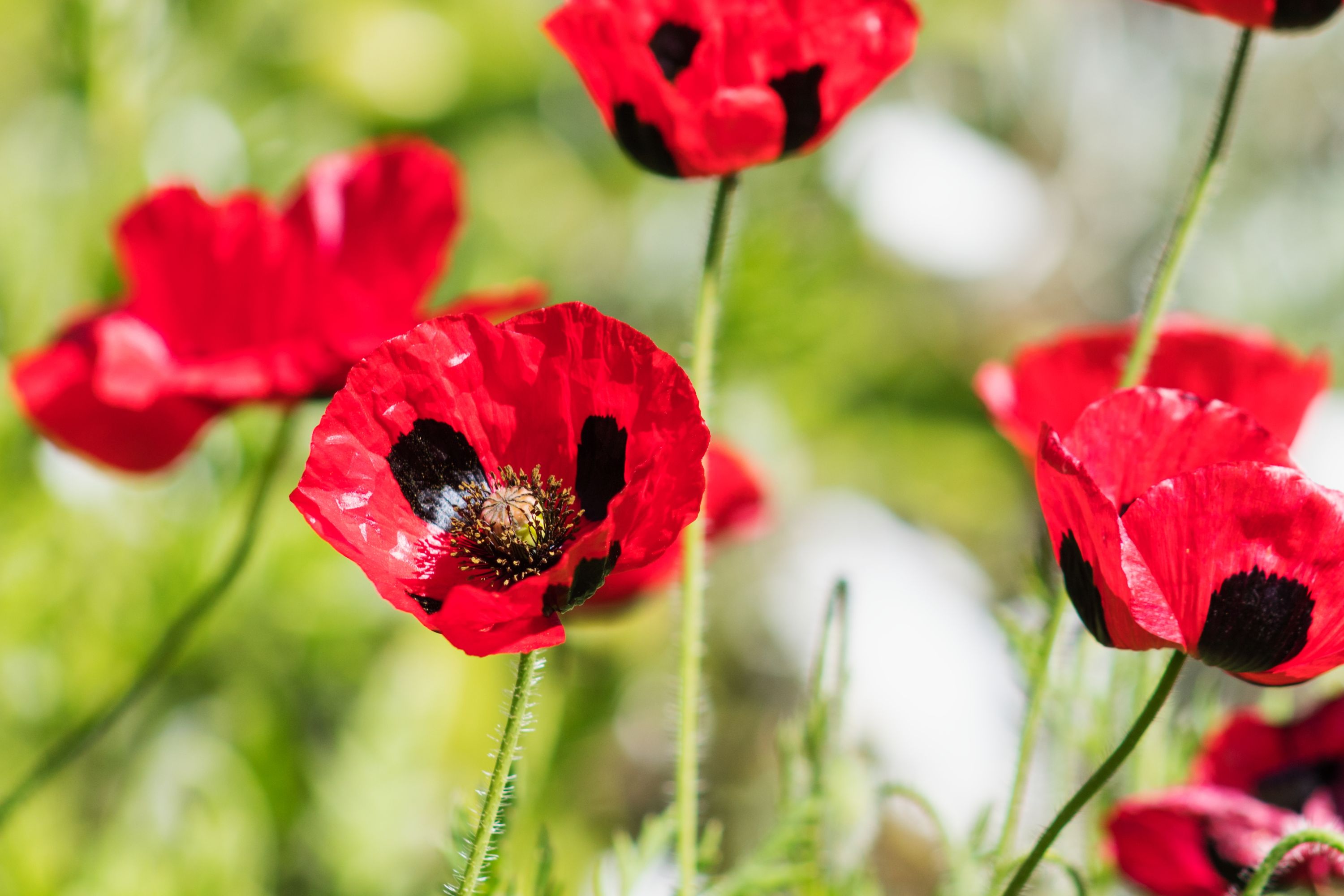Papaver commutatum
(Papaver commutatum)

Description
Papaver commutatum, the Caucasian scarlet poppy, is a species of flowering plant in the family Papaveraceae native to northern Turkey, northwestern Iran and the Caucasus. It is an erect annual growing to 45 cm (18 in) tall by 15 cm (6 in) wide, with hairy stalks and leaves. The flower is bowl-shaped and about 8 cm (3 in) in diameter, bright red with prominent black blotches at the bases of the petals, and is borne in early summer. The flowers are followed by spherical seed heads. The Latin specific epithet commutatum means “changed”, referring to a change of name from another species. The cultivar P. commutatum 'Ladybird' is a popular and easy garden annual for a sunny position in a moist, fertile spot. It bears many flowers on each plant and blooms from late spring to early summer. It is frequently a feature of cultivated wildflower meadows. It has gained the Royal Horticultural Society's Award of Garden Merit, as has the species. The main alkaloid of this species is isocorydine. The flowers have two sepals that fall off as the bud opens, and four (or up to six) petals in red, pink, orange, yellow, or lilac. There are many stamens in several whorls around a compound pistil, which results from the fusion of carpels. The stigmas are visible on top of the capsule, and the number of stigmas corresponds to the number of fused carpels. The ovary later develops into a dehiscing capsule, capped by the dried stigmas. The opened capsule scatters its numerous, tiny seeds as air movement shakes it, due to the long stem. The typical Papaver gynoecium is superior (the flower is hypogynous) with a globular ovary. The style is characteristically absent for the type species opium poppy, and several others, although those with a style do exist. The sessile plate-like stigmata lies on top of the ovary. Pollen-receptive surfaces. The characteristic fruit type of Papaver is the unilocular capsule. The stigmatic disc rests on top of the capsule, and beneath it are dehiscent pores or valves.
Taxonomic tree:







